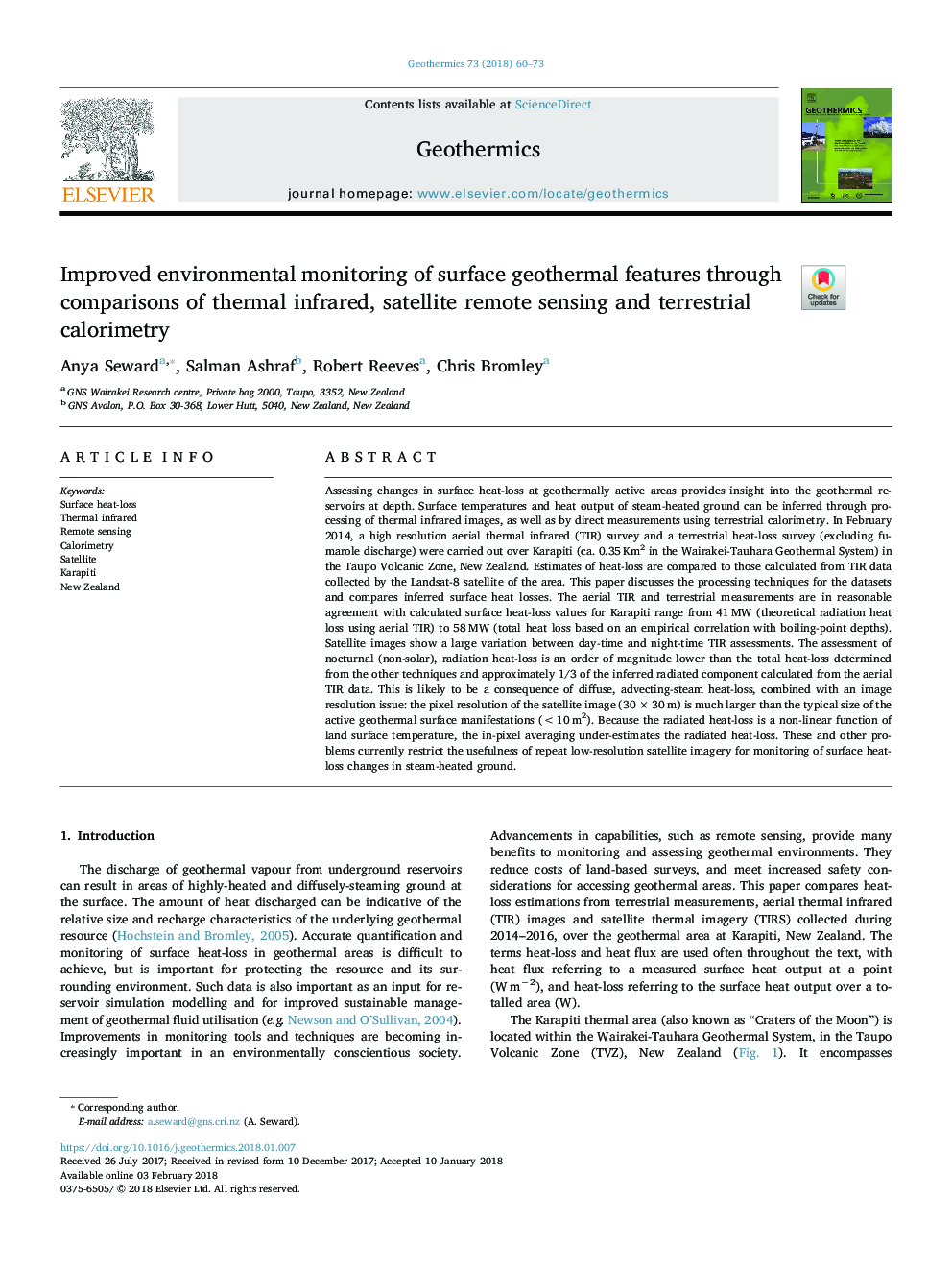| کد مقاله | کد نشریه | سال انتشار | مقاله انگلیسی | نسخه تمام متن |
|---|---|---|---|---|
| 8088575 | 1521896 | 2018 | 14 صفحه PDF | دانلود رایگان |
عنوان انگلیسی مقاله ISI
Improved environmental monitoring of surface geothermal features through comparisons of thermal infrared, satellite remote sensing and terrestrial calorimetry
ترجمه فارسی عنوان
بهبود نظارت بر محیط زیست از ویژگی های سطح زمین گرمایی با مقایسه حرارتی مادون قرمز، سنجش از دور ماهواره ای و کالری سنجی زمین
دانلود مقاله + سفارش ترجمه
دانلود مقاله ISI انگلیسی
رایگان برای ایرانیان
کلمات کلیدی
کاهش گرما در سطح، حرارتی مادون قرمز، سنجش از دور، کالریمتری، ماهواره کاراپتی، نیوزلند،
موضوعات مرتبط
مهندسی و علوم پایه
علوم زمین و سیارات
ژئوشیمی و پترولوژی
چکیده انگلیسی
Assessing changes in surface heat-loss at geothermally active areas provides insight into the geothermal reservoirs at depth. Surface temperatures and heat output of steam-heated ground can be inferred through processing of thermal infrared images, as well as by direct measurements using terrestrial calorimetry. In February 2014, a high resolution aerial thermal infrared (TIR) survey and a terrestrial heat-loss survey (excluding fumarole discharge) were carried out over Karapiti (ca. 0.35â¯Km2 in the Wairakei-Tauhara Geothermal System) in the Taupo Volcanic Zone, New Zealand. Estimates of heat-loss are compared to those calculated from TIR data collected by the Landsat-8 satellite of the area. This paper discusses the processing techniques for the datasets and compares inferred surface heat losses. The aerial TIR and terrestrial measurements are in reasonable agreement with calculated surface heat-loss values for Karapiti range from 41â¯MW (theoretical radiation heat loss using aerial TIR) to 58â¯MW (total heat loss based on an empirical correlation with boiling-point depths). Satellite images show a large variation between day-time and night-time TIR assessments. The assessment of nocturnal (non-solar), radiation heat-loss is an order of magnitude lower than the total heat-loss determined from the other techniques and approximately 1/3 of the inferred radiated component calculated from the aerial TIR data. This is likely to be a consequence of diffuse, advecting-steam heat-loss, combined with an image resolution issue: the pixel resolution of the satellite image (30â¯Ãâ¯30â¯m) is much larger than the typical size of the active geothermal surface manifestations (<10â¯m2). Because the radiated heat-loss is a non-linear function of land surface temperature, the in-pixel averaging under-estimates the radiated heat-loss. These and other problems currently restrict the usefulness of repeat low-resolution satellite imagery for monitoring of surface heat-loss changes in steam-heated ground.
ناشر
Database: Elsevier - ScienceDirect (ساینس دایرکت)
Journal: Geothermics - Volume 73, May 2018, Pages 60-73
Journal: Geothermics - Volume 73, May 2018, Pages 60-73
نویسندگان
Anya Seward, Salman Ashraf, Robert Reeves, Chris Bromley,
